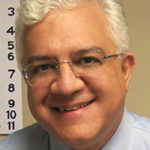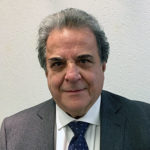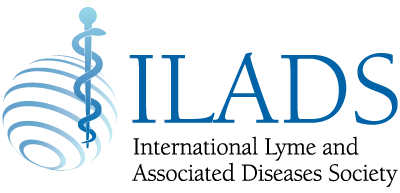Madrid 2019 - Abstracts
Author: Laura Alonso Canal, MD
Title: Pediatric Lyme
We are nowadays facing an epidemic of neurodevelopmental problems in our children such as ADHD or autism. Also, gastrointestinal symptoms in the pediatric population are very frequent and are usually labeled as “functional” and benign. The fact that these problems have aroused in conjunction with an epidemic of autoimmune conditions, chronic fatigue syndrome and fibromyalgia in the adult population makes some researchers postulate that a common background could be found in all of these chronic syndromes with a different expression due to a different age of onset.
Scientific evidence has shown a pro-inflammatory state and a dysregulation of the immune system in both autism and fibromyalgia/chronic fatigue syndrome. The possible role of the current Lyme Epidemic and other chronic infections in the pathogenesis of these diseases is a fascinating and hope-giving field.
During my talk I will discuss the importance of a good anamnesis as well as the common findings in physical examination, laboratory studies and medical imaging in the study and treatment of pediatric tick-born-diseases. Children have special peculiarities to take into account, which are feared by some doctors. Especially small children with limited expressive capability who have sometimes been ill since they were born are more challenging.
Author: Marissa Barbieri, BS
Title: Potential Mechanisms of Fatigue in Post Treatment Lyme Disease Patients
Quality of life for Post Treatment Lyme Disease Syndrome patients is poor. Complaints of fatigue is one of the most common symptoms of PTLDS patients. It is known that autoimmune response to self-proteins via molecular mimicry occurs in PTLDS patients. Molecular mechanisms that mediate fatigue in these patients is currently unknown. We hypothesized that potential autoantibodies to mitochondrial proteins may be responsible for fatigue in these patients. We have surveyed Lyme disease patients in Binghamton, New York and have collected serum and urine specimens from 26 patients. We have screened patient serum samples for autoantibodies using HEp2 cells. Many patients showed cytoplasmic granular "strands of beads" suggesting potential anti-mitochondrial antibodies. Screening of an independent group of PTLDS patient sera for potential autoantibodies using ImmuneProfiler™ Biomarker Discovery on HuProtTM Arrays showed presence of antibodies to mitochondrial proteins such as Pyruvate dehydrogenase and alpha-ketoglutarate dehydrogenase. Our data indicates a potential link between fatigue and autoantibodies to mitochondrial proteins in PTLDS patients.
Author: Steven J. Bock, MD
Title: Functional Medicine and the Complex Tick-Borne Disease Patient
Tick-borne disease is an epidemic in many parts of the world. Chronic Tick-borne disease can present with multiple symptoms, including chronic fatigue, headaches, joint pains, fibromyalgia, sleep issues, cardiac symptoms, visual symptoms and cognitive dysfunction, to name a few. It can be a persistent infection and /or a chronic inflammation, and it can cause dysregulation of multiple body systems, causing immunological, hormonal, digestive, neurological, metabolic, psychological and energetic dysfunction. These issues can be the result of the tick-borne disease or from underlying predispositions, which need to be identified.
Functional medicine “is a dynamic approach to assessing, preventing and treating complex chronic disease.” Functional medicine helps clinicians identify and ameliorate dysfunction in the physiology and biochemistry in the human body as a primary method of improving patient health. These functions are often for each of us the result of life-long interactions among our environment, including tick exposure, our lifestyles and our genetic predisposition.”
I will discuss the many concepts that comprise functional medicine, including assessment strategies, functional medical testing, medical detoxification, heavy metal, chemical exposure, mold and neurotoxin evaluations, IV and oral nutritional therapy and more. This will enable one to start to determine general and specific treatment modalities that will affect patient outcomes and improve the quality of life in the patient with chronic tick-borne disease.
Author: Magdalena Cubala-Kuscharska, MD, PhD
Title: Immunopsychiatry of Children with Lyme and Co-Infections
Late-stage of borreliosis can manifest as neuroinflamation and mental symptoms, which can easily be misdiagnosed as autism, ADHD, motor diseases, psychosis, schizoaffective disorders, bipolar disorder, depression, anxiety disorders (panic disorder, social anxiety disorder, etc.). Co-infection like bartonella, toxoplasma, Babesia, anaplasma, Erhlichia might aggravate neuropsychiatric symptoms. These pathogens have an ability to evade immune defenses and enter the nervous system, causing direct inflammation in the brain.
Neuroinflammation might be caused by direct infection of the brain but also be a result of immuno-inflammatory cascade and pathophysiological changes associated with oxidative stress, excitotoxicity, changes in homocysteine metabolism and altered tryptophan catabolism. Infected individuals may develop a coordinated set of behavioral changes, known as a sickness behavior. This process is triggered by pro-inflammatory cytokines produced by peripheral phagocytic cells in contact with invading microorganisms. The peripheral immune message is relayed to the brain via a fast neural pathway and a slower humoral pathway, resulting in the expression of pro-inflammatory cytokines in macrophage-like cells, microglia in the brain as well as activation mast cells.
Lyme bacteria causes immune and metabolic effects that result in a gradually developing spectrum of neuropsychiatric symptoms. Antibiotics may help improve functioning and prevent further disease progression. Awareness of the association between LB and neuropsychiatric impairments and studies of their prevalence in neuropsychiatric conditions can improve understanding of the causes of mental illness and violence and result in more effective prevention, diagnosis and treatment. In this presentation, we provide data from our clinic for children with neurodevelopmental disorders, who have been positively tested for borrelia burgdoferi.
Author: Pol De Saedeleer, PharmD
Title: The Affected Th1/Th2/Th17 Immune Response
The lecture starts by detailing our immune response There will be a short overview of how our immune system works under normal conditions. Depending on the circumstances, we develop a Th1, Th2 or Th17 response. However, the lecture will focus on the communication between the innate and the adaptive immune response, especially in a situation in which pathogens have been introduced, resulting in an aberrant immune response.
Next to multi-infectious pathology, the core of this lecture, there is a variety of other circumstances in which the normal immune response is disturbed, such as heavy metal toxicity and pollution, exposure to parasites and stress. These will be briefly covered. Yet, the focus will be on an aberrant immune response as the basis of a multi-infectious pathology, resulting in multisystemic disease.
Author: Kunal Garg, MSc
Title: Challenging the Lyme Monomicrobial Paradigm: Diagnosing Lyme Disease and Beyond
An astounding 83% (2.3 million tests) of all tick-borne diseases (TBD) diagnostic tests performed by the commercial laboratories in the USA accounted for only Lyme disease (LD). However, in the Europe, North America, and Australia 4 - 60% of patients with LD were co-infected with Babesia, Anaplasma, or Rickettsia. Yet, tick-borne diseases (TBD) are not tested simultaneously with LD.
We utilized the enzyme linked immunosorbent assay to test 432 patients suffering at different stages of tick-borne diseases for their immunoglobulin M (IgM) and G (IgG) responses against 20 microbes associated with TBDs. Microbial antigens included three Borrelia species in two distinct morphologies (spirochete and persistent form) and TBD associated co-infections and opportunistic infections. Patients were organized in seven categories according to their respective clinical diagnosis provided by the healthcare professionals. Study outcomes indicated 85% probability that a randomly selected patient will respond to Borrelia and other TBD microbes rather than to just Borrelia. Immune responses to multiple microbes were observed at all stages of tick-borne diseases. Remarkably, 72% of the Centers for Disease Control and Prevention (CDC) negative patients responded to at least one Borrelia species' persistent form. Additionally, the odds that a post treatment Lyme disease syndrome (PTLDS) patient at random will respond to Borrelia persistent forms rather than Borrelia spirochetes is 86%.
Outstandingly large and varied immune responses to Borrelia and multiple TBD associated co-infections and opportunistic infections signified the profound polymicrobial nature of TBDs. Reduced health-related quality of life and increased disease severity in TBD patients could be alleviated by introducing guidelines that recommend early diagnosis of multiple TBD associated microbes for different antibody types (IgM and IgG) simultaneously.
Author: Jack Lambert, MD
Title: Congenital Infections in Pregnancy, with Special Focus on Borrelia
Infections in pregnancy are a risk to both mother and child. Much has been learned from congenital syndrome and infection caused by the treponemal infection T pallidum, which causes congenital syphilis. Much has been learned from studies of the mother to child transmission of HIV, timing of infection, risk factors for HIV transmission, and optimal diagnostic measures used to detect these infections. Little scientific data has been accumulated on Congenital Borreliosis over the years, but there are clear similarities with syphilis, and it will be necessary to put together a scientific plan, similar to has been done with HIV, to be able to tackle and eradicate the mother to child transmission of borrelial infections. This presentation with review available scientific data accumulated to date, and give recommendations for next steps to better understand this infection, with a goal to eradication of congenital infection and disease.
Author: Marie Mas, MD
Title: PATHOTIQUE Study. Multi-site PCR of Vectorial Diseases in Ticks
Current serological tests for Lyme disease may have sensitivity problems and do not detect co-infections. What diagnostic contribution can PCR make?
In 2018 and 2019, 65 patients with a SPPT (polymorphic syndrome persistent after tick bites) table, were included in the PATHOTIQUE 1 research protocol (conducted with Prof. Perronne, Prof. Franck, veterinarian, Dr. Lacout and Dr. Mas).
25 germs (borrelia, bartonnella, babesia, candida, rickettsia, anaplasma, mycoplasma) were investigated, by PCR/metagenomics (sequencing), on four different matrices: venous blood, urine, saliva and capillary blood at D0 and D2 of the intake of an enzyme, bromelaine.
Author: Tatjana Mijatovic, PhD
Title: Neglected Infections and Gastrointestinal Issues in Patients with Late/Persistent/Chronic Vector-Borne Infections
Background : Vector-borne infections are increasing globally - Lyme disease is among the most prevalent vector borne infection in the U.S. and Europe and is reaching epidemic levels. In vector-borne diseases concurrent infections frequently occur. The most known, and most investigating concern borreliosis, bartonelosis, babesiosis, rickettsiosis and anaplasmosis. Many other pathogens can worsen the clinical picture and further complicate differential diagnosis.
Aims: The goal of this contribution is to bring the focus on those neglected infections and to present the associated laboratory data. Furthermore, the present contribution aims to provide a deeper understanding of the gastrointestinal disorders in patients with vector-borne infections.
Methods: Available retrospective data were analyzed in order to show the prevalence of these neglected/less investigated infections. Moreover, associated gastrointestinal issues have been retrieved and analyzed.
Results: Among those neglected infections, there are few that deserve more attention and investigations, like Tularemia, Yersinia, Mycoplasma, Chlamydia, Epstein-Barr virus and Herpesviruses. Our data show that prevalence of these infections is not negligible and they should be more investigated. Different testing options are available and lead to better management of the patients with complex clinical picture. Most of concurrent infections are also characterized by gastrointestinal and hepatic involvement, leading to gut inflammation, opportunistic infections, leaky gut and dysbiosis. Most frequently observed bacterial overgrowth contributing to dysbiosis concern Enterococcus, Streptococcus and Prevotella that are strong hydrogen sulfide (H2S) producers. In excess, H2S acts as a mitochondrial poison and a potent neurotoxin. It can directly inhibit enzymes involved in the cellular production of energy. H2S also interferes with oxygen transport by blocking hemoglobin in the red blood cells. Finally, H2S is lowering gut pH preventing the growth of many beneficial bacteria, like Bifidobacteria. Bacteroides, yet another group of dysbiotic bacterias frequently increased in patients with complex clinical pictures, are significant clinical pathogens and are found in most anaerobic infections with an associated mortality of more than 19 %. Species of the genus Bacteroides have the most antibiotic resistance mechanisms and the highest resistance rates of all anaerobic pathogens. Dysbiosis, associated with leaky gut will enable many toxic metabolites to enter the circulation and further impair immune and neuronal functions.
Conclusion: The overall high failure rate of therapies for vector-borne infections, especially in late/persistent/chronic patients, underscores the necessity to fully investigate different concurrent infections along with resulting gastrointestinal and immune dysregulations.
Author: Robert Miller, ND
Title: Environmental Toxin Detox Weakness from Genetic Variants Found in Those with Chronic Lyme Disease
Background: The NutriGenetic Research Institute’s mission is to discover genetic weakness that predisposes individuals to illnesses caused by environmental factors.
Aims: The aim of the studies was to find if there are genetic variants in pathways that would result in: increased free radical production, less than optimal antioxidant production, and weakness in detoxification pathways, which would allow environmental toxins to have more of an impact on the individuals.
Patients and Methods: To determine if unique genetic patterns exist with chronic Lyme patients, we analyzed the genetic patterns of functional and detoxification pathways from 421 participants, who submitted their 23andme genome for a global contrast to data supplied by the 1000 Genome Phase 3 Project. The reference and alternate alleles for each of the SNPs were determined using the HaploReg v4.1 database.
Results:
Phase I Study showed more genetic variants in genes related to methylation, CYP1A1, CYP1BA (Phase I Detoxification), PON1 (pesticide detox), SOD2 (super oxide dismutase), GSTP1 (Glutathione), CPS1, ASS1, ARG2 (Urea Cycle), and HFE C282Y.
Phase II Study showed more variants in genes related to neurotransmitters. This study found increased variants in the GLS, GOT1, GRIA1, and GAD1 genes, creating the potential for excess glutamate. Studies have shown that glutamate triggers the production of nitric oxide and superoxide, which can create peroxynitrite (ONOO−). High serum levels of total NO, MDA, and nitrotyrosine observed in patients with Lyme borreliosis indicate an enhancement of lipid peroxidation and protein nitration, which may enhance the inflammatory process in Lyme patients.
Phase III illustrated higher genetic variants in SLC40A1, which makes Ferroportin, the only iron exporter, more glutathione genes (GSTA1, GSTA2, GSTA5, GSTM1, GSTM3, and GSTM4), and Nrf2 and Keap1.
Phase IV, illustrated more genetic variants in AMPK, ULK1, ULK2 and ATG13, which are all involved with autophagy, a critical process that enhances the immune system by eliminating intracellular pathogens.
Phase V illustrated weakness in the Phase II detox pathway, acetylation. More genetic variants were found in PANK1, ACAT-2 and NAT2. Weakness of acetylation may impair detoxification of environmental pollutants.
Phase VI showed more variants in the heme pathway. Heme is a cofactor for many detoxification pathways including CYP450, Catalase, SOD, Nitric Oxide and SUOX (sulfite to sulfate conversion). More variants were found in ALAD, CPOX, and FECH in the Lyme group.
Discussion: These studies have shown a genetic predisposition to more free radical production, less antioxidant production, and suboptimal detoxification by weakness in methylation, acetylation, and autophagy, and PON1-pesticide detoxification. Consequently, those with these excess variants may be more strongly impacted by environmental factors. More research is needed to determine the impact these have on those with Lyme disease,
Author: Omar Morales, MD
Title: Complimentary Treatments for Lyme Disease, Babesia, and Other Blood-Borne Diseases
Practical Hematologic Viewpoint of Lyme Disease, Babesia and other blood-borne infections: Explanation of red blood cells, white blood cells and plasma, and how they are affected by Lyme Disease and co-infections.
Comparison: Traditional therapies (i.e., antibiotics, supplements) compared with targeted, modern therapies (i.e. apheresis, dendritic cells, toxin & pathogen removal).
Apheresis: How apheresis targets multiple stages of blood infections. Discussion of the types of apheresis, applicability, what they achieve/outcome and evidence of success.
Immunological Adjuvants for Lyme and Co-Infections: Detox, immune boosters, immunotherapy and immune modulation (i.e., dendritic cell therapy) as complimentary treatments.
Additional Factors to Consider: Lyme life philosophy and basic recap of treatment pillars for the chronically ill.
Author: B. Robert Mozayeni, MD
Title: Bartonella Overlap with Tick-Borne Diseases: Better Diagnosis Supports Better
Outcomes
Bartonella is increasingly recognized as a TBD. It is important to understand the basic biology of Bartonella, the pathogenesis of the illness it may cause, and features helpful for diagnosis, such as Bartonella dermal ‘tracks’, small vessel disease, and neurological manifestations. The proper detection and treatment of Bartonella is important for the successful treatment of patients suspected to have Lyme disease. Social media often cloud the picture and the non-scientific public is focused on the symptoms rather than the cause. As clinicians, we must seek to properly identify the cause of these complex chronic conditions.
Protocols for Bartonella treatment have been in development in my office for over 10 years and lately, they appear to provide lasting results. More work remains to be done to streamline the protocols and improve the clinical management of patients with this infection. Clinical principles and functional medicine skills needed to treat Bartonella will be discussed, including the effects and side effects of various treatments. New diagnostic capabilities will also be discussed.
Author: B. Robert Mozayeni, MD
Title: Mast-Cell Activation Syndrome and the Host Response: Persistent Infectious Disease or Host Response Disease
Though of course not a truly new disease, the recently recognized disorder now termed mast cell activation syndrome (MCAS) presents with confounding extreme heterogeneity and with symptoms that may overlap substantially with the symptoms of tick-borne diseases that may make us thing that the infection persists. The inflammation associated with MCAS may be confused with the persistent infection. It may be that not all cases of what has been thought to be chronic infection; are necessarily persistence of infection -- or even infection at all. Hopefully, the attendee will be able to develop their own new perspective on diagnosis and treatment of TBDs that may help reduce misdiagnosis and help in the care of their patients suspected to have a chronic infection.
Author: Pilar Munoz-Calero, MD
Title: Environmental Contaminants and their Association with Chronic Infectious Diseases, Diagnostic Management and Treatment Difficulty
The environment is one of the determinants of the health status of the population. Environmental pathologies represent a set of disorders caused by exposure to chemical and physical products in the habitual environment. In industrialized countries it is estimated that 20% of the incidence of all diseases can be attributed to environmental factors. Xenobiotics present in the environment can be inhaled or ingested involuntarily. The contamination by heavy metals present in the air, water and food is another very frequent source of contamination to which the human being is exposed and contributes to the alteration of the homeostasis, in diverse aspects of the metabolism and the toxicity of the macrophages.
Xenobiotics tend to deposit in the central and peripheral lymphoid organs, hindering an adequate immune response to infections. In the presence of environmental contaminants, these can act as cofactors of acute or chronic infectious diseases. The enzymatic activity of cytochrome P450 is frequently altered, making it difficult to treat these pathologies. It is also common to see a genetic polymorphism caused by environmental pollution generating immunological, carcinogenic or allergic pathologies.
In this presentation we will emphasize the impact of environmental contamination in patients with environmental pathologies with associated chronic infections and chronic immunosuppression. We will also explain our experience with the treatment of some real cases.
Author: Kanneboyina Nagaraju, DVSc, MVSc, PhD
Title: Screening for Autoantibodies in Post Treatment Lyme Disease Syndrome Patients using HuProt Protein Microarray
Pathogenesis of post treatment Lyme disease syndrome is currently unclear and requires systematic investigation. It has been postulated that some of the PTLDS symptoms could be due to antibacterial immune response that cross-react with host self-proteins (autoantigens), commonly called molecular mimicry. Previous studies have used tandem mass spectrometry, database searches, and manual spectral interpretation to identify MHC class II (HLA-DR)-presented peptides from the synovia of Lyme arthritis patients. While this approach was useful to identify some autoantigens in Lyme arthritis patients, the pathological consequences of immune response (T cells and autoantibodies) remained unclear because of their low affinity interaction with target autoantigens. Here we have screened serum samples from PTLDS, Becker muscular dystrophy and normal control with ImmuneProfiler™ human proteome microarray containing individually purified proteins covering 81% of the human proteome (16,152 genes). This approach has potential to identify disease specific autoantigens in an unbiased manner. We hypothesized debilitating symptoms associated with PTLDS are due to immune response to host self-antigens. We have identified autoantibodies to 93 cellular proteins uniquely in PTLDS patients. We further verified autoreactivity of these samples (nuclear, mitochondrial, golgi, centromere, etc. patterns) using indirect immunofluorescence assay on HEp2 cells suggesting that there is a border autoreactivity that may play a role in in the manifestation of systemic disease phenotype.
Author: Carmen Navarro, MD
Title: Chronic Lyme disease Associated with Environmental Diseases: Multiple Chemical Sensitivity, CFS, Fibromyalgia, and Hyperelectrosensitivity
In my intervention I will try to integrate my individual clinical experience with data that make us think that chronic infections, causing chronic Lyme disease, are the first stressful factor, to which could be added other no less important, potentially causing environmental diseases such as Multiple Chemical Sensitivity, Chronic Fatigue Syndrome, Fibromyalgia and Hyperelectrosensitivity, among others. Link the Dr. Martin Pall's NO/ONOO cycle theory with an etiological theory capable of explaining the association between the above-mentioned diseases.
How the signs and symptoms of these diseases can be generated by high levels of Nitric Oxide and other consequences of this: high levels of oxidative stress and inflammatory cytokines, among others.
How the therapy should be aimed at reducing stressors, including infection, emotional stress, exposure to environmental toxins ... and finally try to justify why therapeutic approaches should be aimed at compensating for excessively high levels of ON, superoxide anion, inflammatory cytokines ... and to repair the oxidative damage caused in cellular structures: plasma membranes, mitochondria ... All of this is ultimately oriented towards the need to achieve a competent immune system.
Author: Wojciech Ozimek, MD
Title: Lyme Disease, Parasites, Protozoans and Microbiome
Parasites and protozoans are the vehicle of bacteriae, viruses and heavy metals and the significant obstacle for Lyme recovery. Most of the LLMDs agree that parasites and protozoans may block Lyme disease treatment. Many consider the parasites and protozoans as an important Lyme disease co-infection since many investigations on bacterial profiles of complex microbial communities associated with the different life-cycle stages of parasites and protozoans were conclusive that parasites and their microbiome may cause diagnostic and therapeutic dilemmas. Parasites’ and protozoans’ bacteriae, viruses and heavy metals are transmitted vertically (from parents), horizontally (from the environment or humans and animals) or in some cases a mixture of horizontally and vertically. The parasites’ and protozoans’ microbiome is constantly exposed to the human intestinal microbiota and reflects also the external micro-organisms of microhabitat [gastro-intestinal tract] and macrohabitat [ food and environment].
Upon deworming, a complex interaction between the anthelminthic drug, helminths and microbiome composition might occur leading to some new symptoms and new therapeutic challenges. Since there are more and more date on growing parasites’ and protozoans’ resistance to standard therapeutic protocols and at the same time papers suggesting an increased risk of autoimmune reactions as a result of deworming- our point- How to remove safely parasites and protozoans to fix Lyme and other chronic illnesses?- remains an open question. The next few years will likely witness an immense number of studies uncovering the exact nature of the human microbiome, parasites and protozoans interaction, and finally reveal the specific molecular mechanisms underlying the parasites’ and protozoans’ microbiome as the true Achilles’ heel of the gastrointestinal parasites. There is abundant room for further progress in investigating the relation between the microbiome of different parasites and protozoans, that has, and will continue to offer an important parallel goal for the removal of a wide-variety of devastating human and animal diseases including Lyme and associated diseases.
Author: Philippe Raymond, MD
Title: How to Make a Clinical Diagnosis of Chronic Lyme Disease or Persistent Polymorphic Syndrome After Tick Bite? (SPPT)
Given the multiplicity of symptoms of SPPT (chronic Lyme), and the poor reliability of biological tests, it is important to be able to make a diagnosis oriented on clinic symptoms. Dr. Raymond will share with us his 13-year experience of managing tick-borne diseases through convenient diagnostic grids. This French experience proved to be superimposable on the clinical signs of the Aucott study on the PTLDS (2018), with the scoring of Richard Horowitz, and allowed to describe the SPPT in the reports of the HCSP 2014 (High Public Health Council) then HAS 2018 (High Authority of Health).
Author: Armin Schwarzbach, MD, PhD
Title: Inflammatory Arthritis, Multiple Sclerosis and Other Illnesses: Associations with Tick-Borne Diseases in the Complexity of Multiple Infections
Lyme disease and coinfections are the chameleon of symptoms, laboratory tests and therapies. Many patients can be infected after tick-bites with several and different bacteria from the ticks. Many symptoms of tick-borne diseases are not high-specific for Lyme disease or other tick-borne diseases. Chronic manifestations of infections are complex interactions between host immunity and stealth bacteria and viruses with emerging evidence for the development of different kinds of illnesses.
There are many evidence-based studies about Borrelia burgdorferi or Ehrlichia/Anaplasma or Chlamydia as the causing agents in patients with inflammatory arthritis or multiple sclerosis.
Additionally, viral infections for example by Epstein Barr Virus or Cytomegalovirus may cause chronic inflammation and weaken the host immune system, resulting in diagnostic difficulties and treatment difficulties. The presentation aims to show correlations of tick-borne diseases in the complexity of other chronic infections with different illnesses and syndromes including modern diagnostic possibilities.
Author: Mariia Shkilna, MD, PhD
Title: Epidemiology of Lyme in Ukraine
Ukraine is a country in Eastern Europe. It has a total area of 603,548 km² and land area of 579,330 km², which makes it the largest country on the European continent after Russia (Basic facts. 2010). The forested area in Ukraine is 9.4 million ha, or 15.6% of the total land area. Forests in Ukraine are distributed unevenly. The largest forested territories are in north and west of the country and encompass Polesie region, the temperate broadleaf and mixed forest biomes and the Ukrainian Carpathians.
Since forests and woods are preferred ecosystems of ticks, the risk of contracting diseases transmitted by ticks is higher among forestry workers, farmers and other people working in wooded areas. Ternopil region (oblast), which located in the western part of Ukraine, is an endemic region for Lyme borreliosis. Territories of Ixodes ricinus ticks borreliosis are educed in 57 settlements of 15 districts of the Ternopil area.
Author: Louis Teulieres, MD, PhD
Title: Chronic Infections, Hormonal Dysfunctions and Heavy Metals Connections in Autism
Because of the complexity of the biochemical disturbances occurring during the maturation of organs during infancy, the studies as well as the variability of the autistic spectrum suggest multiple causes. Recent studies have shown that disturbances of the immune system during pregnancy and early childhood can lead to dysfunctions in the processes of neuronal cell migration and GDNF, their differentiation and synaptic maturation. Disruptions of the immune system have serious neurological consequences; this hypothesis is reinforced by recent studies on differentiation in the development of microglia according to the sex of the individual. This could explain the predominance of male autistics Inflammatory cytokines and chemokines and the cells that produce them within the brain, notably microglia, are critical for normal brain development. Inflammatory events during pregnancy, and infancy e.g. in response to (bacterial) infections, may disrupt the normal expression of immune molecules during critical stages of neural development and thereby contribute to the risk for neurodevelopmental disorders such as autism spectrum disorder (ASD). Nevertheless confirmation of the " infections and immune system" model certainly needs better tests that could demonstrate the long lasting presence of living bacteria.
These immunological/infectious causes may be reinforced by our increasing exposure to heavy metals. The toxic effects of these metals have been demonstrated as well as their impacts on the development of the child. Mechanistic, biochemical, and structural studies have demonstrated the roles these metals play also in hormone functions and responses to maintain healthy homeostasis and biological rhythms. Still the role of heavy metals in the development of autism is still highly debated due to a lack of consensus in diagnostics and toxic load evaluation.
New methods of infections diagnostics by specific bacteriophages as well as proposals for matrix selection and heavy metals dosages will be presented. These novelties could permit to establish the link between heavy metals’ immunotoxicity, disturbances in immune responses and hormonal balance that may explain the dramatic increase in cases of autism spectrum disorders.
Conference Highlights
INTERNATIONAL LYME AND ASSOCIATED DISEASES SOCIETY
9th European Conference – Madrid, Spain
Thank you for a successful ILADS 9th Annual European Conference!
The Conference took place in Madrid, Spain on Saturday, June 8, and Sunday, June 9, 2019 at the Hotel VP El Madrono, located in the city’s Salamanca district. Carmen Navarro, MD, was the Program Chair. The conference theme was Lyme Disease: Environmental Disease of the 21st Century.
Please check back here for conference highlights and photos.
Conference videos will be also be available for purchase.
Conference Highlights
INTERNATIONAL LYME AND ASSOCIATED DISEASES SOCIETY
9th European Conference – Madrid, Spain
Online conference registration is closed
Thank you for a successful ILADS 9th Annual European Conference!
The Conference took place in Madrid, Spain on Saturday, June 8, and Sunday, June 9, 2019 at the Hotel VP El Madrono, located in the city’s Salamanca district. Carmen Navarro, MD, was the Program Chair. The conference theme was Lyme Disease: Environmental Disease of the 21st Century.
Please check back here for conference highlights and photos.
Conference videos will be also be available for purchase.
ILADS Madrid 2019 Exhibitor Information
Interested in exhibiting? We expect to have approximately 100 medical and scientific professionals in attendance. We hope you will take an active role in joining us by exhibiting and/or sponsoring one of our activities.
Learn more and download the complete exhibitor prospectus.
Exhibitor registration is now open.
Madrid 2019 Poster Presentations
Author: Babaros Cetin, PhD
- Title: A NEW COMPLİCATİON OF LYME DİSEASE; SPİNAL MUSCULAR ATROPHY (SMA)
Lyme borreliosis is well known multisystem disease and can produce a wide array of
neurological abnormalities in humans. It can affect both the central and peripheral nervous system. Spinal muscular atrophy (SMA) a leading genetic cause of infant death, is a neurodegenerative disease characterised by the selective loss of particular groups of motor neurones in the anterior horn of the spinal cord with concomitant muscle weakness. Spinal muscular atrophy (SMA) is also a neuromuscular disease caused by abnormally low cellular levels of the ubiquitous protein SMN. Recent study finds connection between ALS and SMA. Respiratory failure due to bilateral diaphragm palsy as an early manifestation of ALS. Diaphragmatic paralysis and respiratory failure as a complication of Lyme disease. Lyme –associated diaphragm weakness from phrenic nerve palsy is rare. One of the rarest manifestations of phrenic nerve disorder is neuroborreliosis.
I report two cases. 1-When she was 2 months baby, she had diagnosed with SMA. After three years, her LTT-Borrelia test result is positive. CD57+/CD3-(NK cells) % 0.48, (20 mm 3 ), very low. C3 Compleman test result is low. Her mother’s (38 years old) ,LTT-Borrelia test result also is positive. Borrelia can pass from mother to fetus (Congenital transmission). 2- 13 years old son. He had diagnosed Emery-Dreifuss muscular dystrophy (EDMD),when he was 6
years old. He had ,LTT-Borrelia positive test result, after 5 years. His father lyme test result was positive, when he was 57 years old. Eventually, these results reveal the need for consideration of Lyme borreliyosis in patients diagnosed with SMA for the first time. People who are diagnosed with SMA, DMD, ALS and similar neurodegenerative diseases have a great benefit in performing Lyme tests.
Author: Robert Miller, ND
- Title: HIGHER GENETIC VARIANTS IN THE GENES RELATED TO THE PRODUCTION OF AND UTILIZATION OF NAD+ AND NADPH IN LYME PATIENTS.
Background: NAD+ and NADPH are critical for many functions of cell repair, reducing antioxidants, and are cofactors of the Sirtuins, which are responsible for antioxidant production and the balance of mTOR and autophagy. Weakness in these pathways may make an individual more susceptible to environmental toxins. Aims: The aim of this research project was to find if there are more genetic variants in the production or utilization of NAD+ and NADPH, and the enzymes that are NAD+ -dependent in those with chronic Lyme disease.
Patients and Methods: To determine if unique genetic patterns exist with chronic Lyme patients, we analyzed genetic single nucleotide polymorphisms (SNPs) from 421 participants, who submitted their 23andme genome for a global contrast to data supplied by the 1000 Genome Phase 3 Project. The reference and alternate alleles for each of the SNPs were determined using the HaploReg v4.1 database. The number of SNPs in pathways related to the production of NAD+ and NADPH were analyzed: IDH2, IDO2, KYNU, ME1, NADK, NADSYN1, TALDO1, and PRPT. Additionally, we analyzed the SNPs in genes encoding NAD+ -dependent enzymes: SIRT1, SIRT3, FOXO1, FOXO3, PARP.
Results: SNPs in the genes related to the production of NAD+ and NADPH ranged from 27% to 256% higher in the Lyme group compared to the 1000 genome project; the SNPS in the genes related to the utilization of NAD+ and NADPH were 22% to 356% higher. The most significant finding was increased FOXO3 RS 2951787 polymorphisms. The Lyme group had 42% of the individuals having a heterozygous SNP and 44% being Homozygous while the 1000 genome project had only 23% heterozygous and only 3% Homozygous. FOXO regulates cell proliferation, survival, autophagy, insulin resistance/sensitivity, glucose tolerance, MnSOD expression, catalase expression, glutamine synthetase expression (decreases glutamate/ neuroprotective), and interacts with mTOR and PPARs. All of these functions interact with each other, most have bidirectional relationships, and FOXO effects most of these functions independently.
Discussion: This research shows a potential genetic predisposition in the creation and utilization of NAD+ and NADPH, thus resulting in less ability to detox environmental toxins and repair cell damage. Consequently, those with these variants may be more strongly impacted by environmental factors. More research is needed to determine the impact these have on those with Lyme disease, and to see if methods to support the production and utilization of NAD+ and NADPH may be beneficial.
Author: Omar Morales, MD
- Title: TRIGGERING ENVIRONMENTAL FACTORS AND ADJUVANT MECHANISMS OF IMMUNE EVASION IN LYME
Formation of Free Radicals: How different environmental toxins serve as trigger factors for inflammation, formation of free radicals and immune suppressors.
Inflammatory Process: Explanation of inflammation as a consequence of a damaged immune system. A compromised antigen presenting response and its role with the lymphatic system will be outlined.
The Role of the Dendritic Cell: History, research and development of Dendritic cell manipulation and its role in the initial immunological response.
Dendritic Cell Therapy: Proposed mechanism and physiology of Dendritic Cell Therapy for Lyme disease will be discussed. This will also include information about the Dendritic Cell auto vaccination process and evidenced base assay results from our current studies. A breakthrough of the enhancement of dendritic cells by Nano particles of silver will also be highlighted.
Immunological Adjuvants for Lyme and Co-Infections: Detox, immune boosters, immunotherapy and immune modulation as complimentary treatments.
Additional Factors to Consider: Lyme life philosophy and basic recap of treatment pillars for the chronically ill.
Author: Karen Vanderhoof-Forschner, MBA, LLM
- Title: LYME DISEASE IN THE UNITED STATES: HOW WE GOT HERE
There is much confusion about the actual history of tick-borne diseases. I am an expert on the topic of the history of Lyme disease and the explosion of Lyme disease in the world, because I started the worldwide awareness in 1988, when my son was diagnosed with congenital Lyme disease. Unfortunately, he died in 1991, and on autopsy, the Lyme bacterium was discovered in his optic nerve.
In his endorsement of my book, Everything You Need to Know about Lyme Disease, Dr. Burgdorfer wrote that my research was “outstanding” and my book contains a “tremendously valuable historical timeline of scientific discoveries with the only available references to the original published works.”
Authors: L. Hedges, C. Charles, A. King, N. Lane, I. Blandy, R. Reed, A. Garritsen, M. van Lent, J. Sun, R. Egan, J. McClure
- SENSITIVITY AND SPECIFICITY COMPARISON AND STRAIN INCLUSIVITY TESING FOR A NOVEL TIER 1 EUROPEAN LYME ASSAY
L. Hedges, C. Charles, A. King, N. Lane, I. Blandy, R. Reed, A. Garritsen, M. van Lent, J. Sun, R. Egan, J. McClure
Background: In Europe, Lyme disease is primarily caused by B. afzelii, B. garinii and B. burgdorferi s.s. Europe uses a two-tier testing algorithm for diagnosis of Lyme disease. Quidel has developed the Sofia 2 Lyme+ FIA – a novel point-of-care Tier 1 Lyme lateral flow assay that qualitatively detects the presence of IgM and/or IgG antibody against various Borrelia strains that are present in Europe. Using a proprietary bi-directional assay format, the Sofia 2 Lyme+ FIA qualitatively reports differential Lyme IgM and Lyme IgG results from a single serum or plasma sample within 3 to 10 minutes.
Aims: The purpose of this study was to demonstrate the clinical performance of Sofia 2 Lyme+ FIA test device to predicate IgM and EIA and predicate IgG EIA using serum and plasma specimens from subjects in Europe suspected of having Lyme disease.
Methods: Samples were collected in Europe from individuals suspected of having Lyme disease and/or were at high risk of Lyme disease due to their field of work. These samples were tested with the Sofia 2 Lyme+ FIA and predicate IgM and IgG EIA’s. First tier positive and equivocal results were tested on a predicate IgM and IgG Western Blot.
Additionally, samples were collected in Europe that have antibodies against the following Borrelia strains: B. afzelii, B. garinii, B. spielmanii, and B. bavariensis. These samples were positive by western blot and contained at least one positive band for the strain of interest. These samples were tested with Sofia 2 Lyme+ FIA and the % positivity was determined.
Results: The sensitivity and specificity of the Sofia Lyme+ FIA IgM is 92.3% and 90.1%, respectively. The sensitivity and specificity of the Sofia 2 Lyme+ FIA IgG is 96.4% and 95.2%, respectively. The Sofia 2 Lyme+ FIA qualitative results are comparable to the predicate methods.
Conclusions: Sofia 2 Lyme+ FIA performance is comparable to existing European Tier 1 and Tier 2 methods when tested with serum/plasma from patients that were suspected of Lyme disease in Europe. In addition, Sofia 2 Lyme+ FIA detects samples that represent each of the circulating strains of Borrelia in Europe.
Pricing and Registration Information
Conference registration fees include the following:
- All conference scientific sessions
- CME credits
- Access to exhibitors
- Saturday and Sunday morning and afternoon coffee breaks
- Saturday and Sunday lunch
- Networking opportunities with some of the world’s best Lyme physicians
Pricing & Registration
Regular Registration: USD 350 (€290)
After May 25, 2019: USD 400 (€330)
Onsite: USD 450 (€375)
ILADS Member Registration: USD 300 (€250)
After May 25, 2019: USD 350 (€290)
Onsite: USD 400 (€330)
All registrations and other orders will be billed in US Dollars. Prices shown in Euros are based on representative exchange rates as of a given date and are subject to change without notice. No partial refunds due to changing exchange rates will be given.
Conference registration is now open.
Online registration ended on June 5, 2019.
Conference Agenda
Use the links below to go directly to that day's schedule. Schedule will be updated as the conference approaches.
FRIDAY, JUNE 7, 2019 | SATURDAY, JUNE 8, 2019 | SUNDAY, JUNE 9, 2019
Friday, June 7, 2019
19:00-21:00
Exhibitor Set Up
Social Activities:
19:00-21:00
Reception and Dinner at Palacio de Cibeles
- 19:00-19:30 Terrace 6th Short Welcome Drink
- 19:30-21:00 Restaurant Space Collection 2nd Cocktail Collection
21:00
Walk along the Paseo de las Artes
Saturday, June 8, 2019
08:15-17:00
Registration and Exhibits Open - Cúpula Room
Morning Session
Castellana Conference Room
Moderator: ILADS President Leo J. Shea III, PhD
09:00-09:15
Carmen Navarro, MD, Program Chair
Welcome
09:15-09:45
Louis Teulieres, MD, PhD
Chronic Infections, Hormonal Dysfunctions and Heavy Metals Connections in Autism
09:45-10:15
Carmen Navarro, MD
Lyme Disease in Spain – Updated
10:15-10:45
Magdalena Cubala-Kucharska, MD, PhD
Immunopsychiatry of Children with Lyme and Co-Infections
10:45-11:15
Networking Break with Poster Presentations
11:15-12:00
B. Robert Mozayeni, MD
Bartonella Overlap with Tick-Borne Diseases: Better Diagnosis Supports Better Outcomes
12:00-12:30
Jack Lambert, MD
Congenital Infections in Pregnancy, with Special Focus on Borrelia
12:30-13:00
Question and Answer Period with Morning Faculty
13:00-14:00
Lunch for all registrants
13:30-14:00
Poster Viewing and Oral Poster Presentation
Afternoon Session
Castellana Conference Room
14:00-14:30
B. Robert Mozayeni, MD
Mast-Cell Activation Syndrome and the Host Response: Persistent Infectious Disease or Host Response Disease
14:30-15:00
Pol De Saedeleer, PharmD
The Affected Th1/Th2/Th17 Immune Response
15:00-15:30
Philippe Raymond, MD
How to Make a Clinical Diagnosis of Chronic Lyme Disease or Persistent Polymorphic Syndrome after Tick Bite (SPPT)
15:30-16:00
Networking Break and Poster Viewing
16:00-16:30
Armin Schwarzbach, MD, PhD
Inflammatory Arthritis, Multiple Sclerosis and Other illnesses: Associations with Tick-Borne Diseases in the Complexity of Multiple Infections
16:30-17:00
Marie Mas, MD
PATHOTIQUE Study. Multi-site PCR of Vectorial Diseases in Ticks
17:00-17:30
Question and Answer Period with Afternoon Faculty
Social Activities:
20:00-22:00
Dinner and Flamenco Show at Café de Chinitas
22:00
Walk through the Madrid of the Austrias
Sunday, June 9, 2019
08:15-17:00
Registration and Exhibits Open - Cúpula Room
Registrants choose between two tracks:
Track A – Lyme Fundamentals
Neptuno Conference Room
Morning Session
09:15-10:15
Part I- Basic Concepts
- Definition & Incidence/2 standards of care
- Historic perspective
- Clinical manifestations:
- Acute
- Chronic
10:15-10:45
Networking Break with Poster Viewing
10:45-11:30
Part 2 - Management
- Clinical Judgment
- Short term antibiotics in late stage disease
- Evidence of persistent infection
- Treatment
- Prophylaxis
- Acute Lyme-with or without an EM Rash
- Long term treatment
-
- “No Benefit” -analysis of these studies
- Positive outcomes of retreatment
-
- Antimicrobials
- Clinical Oversight
11:30-12:30
Part 3 – Pathogenesis
12:30-12:45
Question and Answer Period with Morning Faculty
12.45-14:00
Lunch for All Registrants
Afternoon Session
14:00-15:30
Steven Bock, MD
Functional Medicine and the Complex Tick-Borne Disease Patient. Part I
15:30-16:00
Networking Break and Poster Viewing
16.00-17:00
Steven Bock, MD
Functional Medicine and the Complex Tick-Borne Disease Patient. Part II
17:00-17:30
Question and Answer Period
17:30
Adjourn
Track B – Advances in Lyme
Castellana Conference Room
Morning Session
09:15-09:45
Mariia Shkilna, MD, PhD
Epidemiology of Lyme in Ukraine
09:45-10:15
Laura Alonso Canal, MD
Pediatric Lyme
10:15-10:45
Networking Break with Poster Viewing
10:45-11:15
Kanneboyina Nagaraju, DVSc, MVSc, PhD
Screening for Autoantibodies in Post Treatment Lyme Disease Syndrome Patients using HuProt Protein Microarray
11:15-11:45
Omar Morales, MD
Complimentary Treatments for Lyme Disease, Babesia, and Other Blood-Borne Diseases
11:45-12:15
Tatjana Mijatovic, PhD
Neglected Infections and Gastrointestinal Issues in Patients with Late /Persistent /Chronic Vector-Borne Infections
12:15-12:30
Oral Poster Presentation
12:30-13:00
Question and Answer Period with Morning Faculty
13:00-14:00
Lunch for All Registrants
Afternoon Session
14:00-14:30
Robert Miller, ND
Environmental Toxin Detox Weakness from Genetic Variants Found in Those with Chronic Lyme Disease
14:30-15:00
Kunal Garg, MSc
Challenging the Lyme Monomicrobial Paradigm: Diagnosing Lyme Disease and Beyond
15:00-15:30
Pilar Munoz-Calero, MD
Environmental Contaminants and their Association with Chronic Infectious Diseases, Diagnostic Management and Treatment Difficulty
15:30-16:00
Networking Break with Poster Viewing
16:00-16:30
Wojciech Ozimek, MD
Lyme Disease, Parasites, Protozoans and Microbiome
16:30-17:00
Maria Luisa Garcia Alonso, PharmD
Microbiota and Lyme Disease
17:00-17:30
Question and Answer Period with Afternoon Faculty
17:30
Adjourn
Social Events and Hotel Information
Social Events
Please join us for social events on Friday evening, June 7, and on Saturday evening, June 8. On Friday, the evening will begin with cocktails on the 6th floor of the historic Palacio de Cibeles. This will be followed by dinner featuring a tasting menu by renowned Toledo chef Adolfo Muñoz. After dinner, an informal walking tour of the Paseo de las Artes neighborhood will be available.
Saturday's evening entertainment will begin with dinner and a flamenco performance at Cafe de Chinitas, a restaurant that has been in business for nearly 50 years and is located in an 18th century palace on Torija Street. Here is an entertainment preview. After dinner, there will be an informal walking tour of the Madrid of the Austrias neighborhood.
Conference registrants, exhibitors, and their guests are welcome to attend these social events.
Hotel Information
The conference will take place at:
Hotel VP El Madrono
C/General Diaz Porlier 101
28006 Madrid
Sleeping rooms are also available at the Hotel VP El Madrono. To book your sleeping rooms, please click here for a room reservation form in Spanish or click here for a room reservation form in English. You may also contact the Group Reservations Office at + 34 91 562 52 92.
Other nearby hotels include:
- Dormirdcine Hotel
- NH Principe Vergara Hotel
- Zenit Abeba Hotel
- Abba Madrid Hotel
- NH Madrid Balboa
- AC Avenida America Hotel
- Melia Madrid Serrano Hotel
Madrid 2019 Conference Speakers

Laura Alonso Canal, MD
- Pediatric Lyme
Dr. Alonso is a Pediatrician in Madrid. She also has experience in the treatment of adults. Dr. Alonso studied Medicine in the Complutense University of Madrid and has 2 years of the residency of Internal Medicine in Barcelone with an emphasis in infectious diseases. She completed the 4-year specialty of Pediatrics at the Niño Jesús Hospital and has a Master Degree in Tropical Medicine. She is devoted to the treatment of Lyme disease under its many manifestations. She has special dedication to pediatric gastroenterology and performs upper and lower endoscopies in children. She searches for underlying infections in autistic children and in children with inflammatory bowel disease. Dr. Alonso uses nutritional therapy for many of her patients together with antibiotic and herbal treatment. She firmly believes in the very important role that underlying infections play in neurodegenerative, psychiatric and autoimmune disorders.

Steven J. Bock, MD
- Functional Medicine and the Complex Tick-Borne Disease Patient
Dr. Bock has been practicing the integrative treatment of tick-borne disease for more than 30 years at his offices in Rhinebeck and Albany, New York. He graduated from New York Medical College in 1971, where he now serves as a clinical instructor, teaching integrative medicine. Dr. Bock is a Diplomate of the American Academy of Anti-Aging Medicine and has been certified in Acupuncture for 30 years. He has authored three books, lectures internationally, and recently launched a tick-borne disease consulting practice in Santa Monica, California, in addition to his East Coast practices.

Magdalena Cubala-Kucharska, MD, PhD
- Immunopsychiatry of Children with Lyme and Co-Infections
Dr. Cubala-Kucharska received her MD from Silesian Medical University in Katowice and obtained her specialization in Family Medicine from Warsaw Medical University, where she did her residency training. She received her PhD in the field of allergology and immunology from the Medical University of Lodz. She is a pioneer in introducing the biomedical approach to neurodevelopmental disease to Europe as well as in initiating research in this field in Poland. She is the founder of the Arcana Institute of Integrative Medicine, where she takes care of children and adults with neurodevelopmental disorders and chronic illness (including Autism Spectrum Disorder, ADHD, OCD, Lyme and tick-borne disease, zoonoses, allergies, Inflammatory Bowel Disease, Small Intestinal Bacterial Overgrowth, and autoimmune disease). She has been a member of ILADEF board of directors since 2017 and she was the Program Chair of ILADS Warsaw 2018.

Pol De Saedeleer, PharmD
- The Affected Th1/Th2/Th17 Immune Response
Pol De Saedeleer graduated from the University of Louvain in 1991 as a Doctor in Pharmaceutical Science. He also has two Master’s degrees: the first in Nutritional and Phytotherapeutical Therapies from IMPB in Louvain-La-Neuve, and the second in Homeopathic Practice from VSU in Ghent. As the head of a Belgian compounding pharmacy and the scientific director of two research-focused nutritional laboratories, Dr. De Saedeleer has taken a particular interest in dealing with immune-related pathologies. Dr. De Saedeleer presents at medical conferences and workshops throughout Europe, including A4M, ILADS, and the German Borreliose Society, where he provides evidence-oriented medicine and pharmaceutical and nutritional recommendations to improve patient health. He is the Chairman of the European ILADS Committee.

Maria Luisa Garcia Alonso, PharmD, RPh, MBA
- Pediatric Lyme
- Microbiota and Lyme Disease
Dr. Maria Luisa Garcia Alonso is the Managing Director of the Analytical Studies at a private laboratory dedicated to offering an array of analysis to hospitals, extraction centers, and universities. She is currently collecting data for upcoming publications on Microbiota and Lyme disease. She is a frequent speaker at seminars and conferences in her field.

Kunal Garg, MSc
- Challenging the Lyme Monomicrobial Paradigm: Diagnosing Lyme Disease and Beyond
Kunal Garg received a Master of Science in Nanoscience from the University of Jyväskylä and a Bachelor of Technology in Biotechnology from the Vellore Institute of Technology. He is also a Ph.D. candidate in the Cell and Molecular Biology Nanoscience Center at the University of Jyväskylä where he is developing novel diagnostics for vector-borne diseases with unique detection system involving inorganic material.

John Lambert, MD
- Congenital Infections in Pregnancy, With Special Focus on Borrelia
Dr. John (Jack) Lambert is Consultant in Infectious diseases in Dublin at the Mater Misericordiae University Hospital and Professor at UCD School of Medicine. He has 25 years of experience in Infectious Diseases covering HIV, Hepatitis C, and other disease areas. He has also trained in the USA, where he developed his skills in vaccinology, HIV, and Lyme and co-infections. He has consultant specialty certifications in adult and pediatric infectious diseases, general medicine and pediatrics, and in sexual health.

Marie Mas, PhD
- PATHOTIQUE Study. Multi-site PCR of Vectorial Diseases in Ticks
Dr. Mas is a general practitioner and emergency physician in Bourg en Bresse, France. For the past two years, she has consulted with patients with Lyme disease. Dr. Mas is the co-author of the book Lyme Pratique, which will be published in Spring 2019. She is the co-author of several scientific publications on Lyme disease. Dr. Mas is also the founder of the Lyme Club (www.clublyme.com).

Tatjana Mijatovic, PhD
- Neglected Infections and Gastrointestinal Issues in Patients with Late /Persistent /Chronic Vector-Borne Infections
Dr. Mijatovic is an experienced scientist with notable work practice in academic, biotech and pharma settings. Her strong commitment to research has contributed to the discovery of new therapeutic solutions, drugs, targets and diagnostic tools.

Robert Miller, ND
- Environmental Toxin Detox Weakness from Genetic Variants Found in Those with Chronic Lyme Disease
Robert Miller is a Naturopath and Herbalist who owns and operates Tree of Life Health in Ephrata, PA. He is the founder and president of the NutriGenetic Research Institute which performs ongoing research into the relationship between genetic SNPs, and health conditions or lab abnormalities. Robert Miller is also the founder and president of Functional Genomic Analysis which creates and markets cloud-based software for health professionals to analyze the relationship between genetic variants, labs and symptoms to help the health professionals create nutritional protocols to compensate for genetic weakness. He is a product developer of Epigenetic Supplements for Professional Health Products.

Omar Morales, MD
- Complimentary Treatments for Lyme Disease, Babesia, and Other Blood-Borne Diseases
Dr. Morales developed an interest in treating tropical diseases with a hematological approach while living in Puerto Vallarta. He is currently the only ILADS physician in Mexico. While dealing with a challenging case of severe Babesia and other co-infections, Dr. Morales was able to utilize his transfusion medicine background and blood bank resource to implement a new treatment. Dr. Morales continues to learn and advance intricate protocols to address Lyme disease and other co-infections. Dr. Morales continues to be an active researcher of the renowned Biomedical Center de Occidente as well as contributing to publications internationally. He firmly believes that with active medical research and analysis eventually, much of the healthcare community will agree that to undertake as big of a challenge as Lyme disease, a multidisciplinary and integrative approach is the only way.

Robert Mozayeni, MD
- Bartonella Overlap with Tick-Borne Diseases: Better Diagnosis Supports Better Outcomes
- Mast-Cell Activation Syndrome and Host Response: Persistent Infectious Disease or Host Response Disease
Dr. Mozayeni was trained in Internal Medicine and Rheumatology at Yale and at NIH. He has had pre- and post-doctoral Fellowships in Molecular Biophysics and Biochemistry at Yale, and also at NIH where he was a Howard Hughes Research Scholar and then Senior Staff Fellow. He is an expert in Translational Medicine, the science and art of advancing medical science safely and efficiently. He is a Fellow of the non-profit Think Lead Innovate Foundation and is a co-founder of the Foundation for the Study of Inflammatory Diseases. He is a Founder of the Foundation for the Study of Inflammatory Diseases to crowd-source medical solutions for complex conditions using existing knowledge, diagnostic methods, and therapies to meet patient needs immediately. He also is the Chief Medical Officer of Galaxy Diagnostics and was recently appointed as a board member of the Human-Kind Alliance. Since 1994, Dr. Mozayeni has held admitting privileges on the clinical staff of Suburban Hospital, a member of Johns Hopkins Medicine and an affiliate of the National Institutes of Health Clinical Center.

Pilar Muñoz-Calero, MD
- Environmental Contaminants and their Association with Chronic Infectious Diseases, Diagnostic Management and Treatment Difficulty
Dr. Munoz-Calero specializes in Pediatrics, Neonatology, Stomatology, and Addictions. She is also an expert in Environmental Medicine. She currently is the President of Fundación Alborada and Medical Director of Alborada Outpatient Hospital. She is the co-director of the Chair of Pathology and Environment of the Universidad Complutense de Madrid and Associate Professor at the Faculty of Medicine of the Universidad Complutense de Madrid. She's registered in the Ilustre Colegio Oficial de Médicos de Madrid (Spain) and the General Medical Council (GMC) (UK). Dr. Munoz-Calero is a member of the American Academy of Environmental Medicine (AAEM) and a collaborator at Breakspear Medical Group in the UK. She has been an organizer in Spain of nine International Congresses of Environmental Medicine.

Kanneboyina Nagaraju, DVSc, MVSc, PhD
- Screening for Autoantibodies in Post Treatment Lyme Disease Syndrome Patients using HuProt Protein Microarray
Dr. Nagaraju is a professor and the Founding Chair of the Department of Pharmaceutical Sciences at Binghamton University. He is the Co-Founder and Member of the Board of Directors of ReveraGen Biopharma Inc. in Rockville, MD. He is also the Co-Founder and Member of the Board of Directors, Agada Biosciences in Halifax, Nova Scotia. Dr. Nagaraju received a Ph.D. in Immunology from SGPGI of Medical Sciences in Lucknow, India and served a Post-doctoral fellowship in Immunology at the National Institutes of Health in Bethesda, MD.

Carmen Navarro, MD
- Lyme Disease in Spain – Updated
Dr. Navarro has a Bachelor of Medicine and Surgery from the University of Granada and a Master in Integrative and Humanist Medicine. She is an expert in Micronutrition and Diet Therapy at the University of Almeria. Dr. Navarro is currently the Medical Director of the GAIA Clinic with specialized consultation in Environmental Medicine: Multiple Chemical Sensitivity, CFS, Fibromyalgia and chronic bacterial and viral infectious diseases. She is a Member of the Spanish Society of Integrative Medicine (SESMI) and Spanish Association of Integrative Physicians (AESMI).

Wojciech Ozimek, MD
- Lyme Disease, Parasites, Protozoans and Microbiome
Dr. Ozimek is a Pediatrician specializing in general and emergency pediatrics as well as parasitology and tick-borne infections. He is the co-owner and Medical Director of Centrum Dr. Ozimek and the Vice President for the Society for Investigation of Undiagnosed & Complex Diseases Difficult to Cure. Dr. Ozimek is the Executive Medical Director at Gras Clinical Services & Research. He is a media medical expert, columnist, and tv host. He studied at the Saint Petersburg State Medical Academy, University of Manchester School of Medicine and Warsaw Medical School.

Philippe Raymond, MD
- How to Make a Clinical Diagnosis of Chronic Lyme Disease or Persistent Polymorphic Syndrome after Tick Bite (SPPT)
Dr. Raymond is a founding member of the Chronimed Working Group in 2009 with Professor Luc Montagnier and is a founding member of the scientific council of the French Federation against Tick-borne Diseases (FFMVT). He also was part of the working groups of the High Council of Public Health (HCSP) and the High Authority of Health (HAS) on Lyme Borreliosis which published reports in 2014 and 2018 on Persistent Polymorphic Syndrome after Tick bite (SPPT). Dr. Raymond is the coordinator of a private medical forum of 235 French-speaking doctors on Chronic Cold Infections.

Armin Schwarzbach, MD, PhD
- Inflammatory Arthritis, Multiple Sclerosis, and Other Illnesses: Associations with Tick-Borne Diseases in the Complexity of Multiple Infections
Dr. Schwarzbach is a Medical Doctor and Specialist for Laboratory Medicine and is the founder of ArminLabs. He has been at the forefront of tick-borne research for more than 20 years and is an expert in diagnosing and treating infectious diseases. He is an Advisory Board member of AONM London, England, and Board Member of the German Borreliosis Society and Member of the International Lyme and Associated Diseases Society (ILADS) and has served as an expert on advisory committees on Lyme Disease in Australia, Canada, Ireland, France, England, Sweden and Germany.

Leo J. Shea III, PhD
Dr. Shea is Clinical Associate Professor of Rehabilitation Medicine at Rusk Institute, a division of New York University Langone Health, where he is also a senior psychologist and co-director of the Family Therapy Training Program. Dr. Shea is President of Neuropsychological Evaluation and Treatment Services, with offices in New York City and Quincy, Massachusetts. His practice focuses on injuries and illnesses of the central nervous system, tick-borne diseases, forensic and medico-legal matters. Treatment modalities include individual cognitive remediation and psychotherapy, family and spousal therapy and executive life coaching. He was formally the Chairman Emeritus of the National Research Fund for Tick-Borne Diseases, Inc. which funded scientific research at major medical and academic institutions. Dr. Shea is currently the President of ILADS and is Immediate Past President of the International Lyme and Associated Diseases Educational Foundation (ILADEF).

Mariia Shkilna, MD, PhD
- Epidemiology of Lyme in Ukraine
Dr. Shkilna is an Assistant Professor in the Department of Infectious Diseases, Epidemiology, and Dermatovenerology at the I. Horbachevsky Ternopil State Medical University in Ternopil, Ukraine. She also serves as a doctor of infectious diseases in Ternopil. Her research focuses on tick-borne disease exposure and preventative methods used by forestry workers in the Ternopil region and the risk of Lyme borreliosis in children in the Ternopil region.

Louis Teulieres, MD, PhD
- Chronic Infections, Hormonal Dysfunctions and Heavy Metals Connections in Autism
Dr. Teulieres is an immunologist and infectious diseases specialist. He has 10 years of experience in clinical immunology research and development at the Pasteur Institute plus nine years in research management at university hospitals. Since 2003, he has been in private clinical practice in Paris focusing on chronic immune and neurodegenerative diseases.

Karen Vanderhoof-Forschner, JD, MBA
Karen Vanderhoof-Forschner was the Chair of the Board of Directors and Co-Founder of the Lyme Disease Foundation for over 24 years. Ms. Vanderhoof-Forschner is the author of “Everything You Need to Know about Lyme Disease & Other Tick-Borne Disorders.” She was selected as a public member of the Federal Tick-Born Disease Working Group. The Working Group provides subject matter expertise and review of federal efforts to all tick-borne diseases, to help ensure interagency coordination and examine research and program priorities.
Submit an Abstract
Information for Potential ILADS Speakers and Poster Presenters
Thank you for your interest. The deadline for submissions was April 1, 2019, and ILADS is no longer accepting submissions for the 2019 Madrid Conference. We hope you will consider submitting an abstract for future ILADS conferences.
